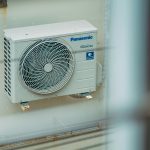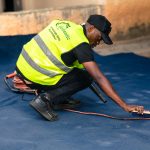How can your business ensure maximum efficiency from day one with a new compressed air system? Professional installation services deliver immediate operational benefits, including reduced energy costs and enhanced reliability. According to the British Compressed Air Society, properly installed systems can improve energy efficiency by up to 30% compared to DIY installations in 2025. Expert industrial air compressor installation ensures optimal performance while minimizing costly downtime.
Critical Factors to Consider Before System Implementation
The foundation of any successful industrial air compressor installation lies in comprehensive pre-implementation assessment. This crucial phase determines whether your system will deliver optimal performance or become a costly operational burden. Professional evaluation encompasses multiple technical dimensions that significantly impact long-term reliability and efficiency.
Have you seen this : How Will Recent Market Trends Affect UK Businesses?
Space evaluation forms the cornerstone of effective system planning. Your facility’s layout, ceiling height, ventilation capacity, and accessibility requirements directly influence equipment selection and positioning. Proper spatial analysis ensures adequate airflow around components, maintenance access, and compliance with safety regulations. These considerations prevent costly modifications and operational restrictions down the line.
Energy demand calculations require precise assessment of your facility’s compressed air requirements. Peak usage patterns, simultaneous equipment operation, and future expansion plans must factor into capacity planning. Undersized systems struggle under load and consume excessive energy, while oversized installations waste resources through inefficient part-load operation. Accurate demand analysis optimizes both performance and operating costs.
Also to see : Unlock your entrepreneurial future with a self-sponsorship visa
Environmental conditions and existing infrastructure present additional critical variables. Ambient temperature fluctuations, humidity levels, dust exposure, and electrical supply characteristics all influence system design and component selection. Integration with existing utilities, distribution networks, and control systems requires careful coordination to ensure seamless operation and maximize your investment’s value.
Site Assessment and Infrastructure Requirements
A thorough site assessment forms the foundation of any successful industrial air compressor installation. Before any equipment arrives on site, experienced technicians must evaluate the physical space, existing infrastructure, and operational requirements to ensure optimal system performance.
Electrical infrastructure demands careful attention, as industrial compressors require substantial power supplies with appropriate voltage ratings and protection systems. The installation site must accommodate heavy equipment loads while providing adequate clearance for maintenance access. Poor electrical planning can lead to voltage drops, motor damage, and costly system failures.
Ventilation requirements cannot be overlooked, particularly in enclosed spaces where heat buildup affects compressor efficiency and longevity. Proper airflow management ensures consistent operating temperatures while preventing moisture accumulation that could compromise air quality and system components.
Drainage systems play a crucial role in managing condensate removal, especially in humid environments where moisture separation becomes critical. Professional assessment identifies potential drainage challenges early, preventing water damage and maintaining compressed air purity standards.
Investing in comprehensive site evaluation with qualified engineers prevents expensive retrofitting, reduces installation timeframes, and ensures compliance with safety regulations. This upfront assessment approach has proven invaluable across countless industrial installations throughout the UK.
The Complete Installation Process: From Planning to Commissioning
Installing an industrial air compressor system requires meticulous planning and technical expertise to ensure optimal performance and longevity. Each phase of the installation process demands careful attention to detail and adherence to safety standards.
The comprehensive installation journey involves several critical stages that must be executed with precision:
- Site assessment and system sizing to determine optimal equipment placement and capacity requirements
- Foundation preparation and structural modifications to accommodate the compressor’s weight and vibration characteristics
- Mechanical installation including positioning, levelling, and securing the compressor unit
- Electrical connections covering power supply, control systems, and safety interlocks
- Piping and distribution network installation with proper routing and leak testing
- System commissioning including performance testing, calibration, and operator training
Professional installation teams bring years of experience to navigate potential challenges such as space constraints, electrical requirements, and integration with existing systems. This expertise ensures your compressor operates at peak efficiency from day one, minimizing downtime and maximizing return on investment.
Quality Assurance and Performance Optimization
Rigorous quality assurance protocols form the backbone of reliable compressed air system performance. Every component undergoes comprehensive testing procedures to verify operational parameters, pressure ratings, and energy consumption metrics before installation. These systematic evaluations identify potential inefficiencies and ensure optimal system configuration from the outset.
Performance optimization extends beyond initial installation through continuous monitoring and calibration. Advanced diagnostic tools measure airflow patterns, pressure consistency, and energy consumption to establish baseline performance metrics. Regular performance audits reveal opportunities for efficiency improvements while preventing costly system failures that could disrupt production schedules.
Certification standards provide framework for maintaining industrial-grade reliability. Systems meeting ISO 8573 air quality standards and energy efficiency certifications demonstrate compliance with stringent operational requirements. Professional certification ensures installations meet safety protocols while maximizing operational lifespan and minimizing maintenance costs.
Proactive optimization strategies focus on preventive measures rather than reactive repairs. Temperature monitoring, vibration analysis, and oil quality assessments identify wear patterns before they compromise system integrity. This approach reduces unplanned downtime while extending equipment lifespan through strategic maintenance scheduling and component replacement timing.
Long-term Maintenance and Support Strategies
A well-designed compressed air system represents a significant investment that requires strategic maintenance planning to deliver consistent performance over its operational lifetime. Professional maintenance programmes extend equipment longevity while preventing costly unexpected breakdowns that can disrupt production schedules.
Regular service intervals form the backbone of effective maintenance strategies. These scheduled interventions address wear components, lubrication requirements, and system calibration before performance degrades. Preventive maintenance typically costs a fraction of emergency repairs whilst maintaining optimal energy efficiency throughout the system’s lifecycle.
Technical support partnerships prove invaluable when complex issues arise or system modifications become necessary. Experienced service providers offer rapid diagnostic capabilities and maintain comprehensive spare parts inventories to minimise downtime. Their deep understanding of system behaviour enables proactive recommendations that prevent problems before they impact operations.
Long-term partnerships with established service providers deliver compounding benefits over time. These relationships foster system knowledge accumulation, enabling increasingly effective maintenance strategies tailored to specific operational patterns. With over 45 years of experience, established providers understand how industrial environments affect equipment performance and can anticipate maintenance needs accordingly.
Frequently Asked Questions About Industrial Air Compressor Setup
What factors should I consider when installing an industrial air compressor?
Consider power requirements, space constraints, ventilation needs, air demand calculations, and future expansion plans. Professional assessment ensures optimal equipment selection and proper installation for maximum efficiency and longevity.
How much does professional industrial air compressor installation cost?
Installation costs vary based on system size, complexity, and site requirements. Typically ranges from £2,000 to £15,000+ including equipment positioning, piping, electrical connections, and commissioning services.
What maintenance is required after installing an industrial air compressor system?
Regular maintenance includes filter changes, oil level checks, drain valve operation, and pressure testing. Professional servicing every 3-6 months ensures optimal performance and prevents costly downtime.
How long does it take to install a complete industrial air compressor system?
Installation timeframes range from 1-3 days for standard setups to several weeks for complex systems. Factors include site preparation, electrical work, and system commissioning requirements.
What certifications should I look for in an industrial air compressor installation company?
Look for Gas Safe registration, electrical qualifications, manufacturer certifications, and comprehensive insurance coverage. Experienced technicians with proven expertise ensure safe, compliant installations meeting industry standards.











